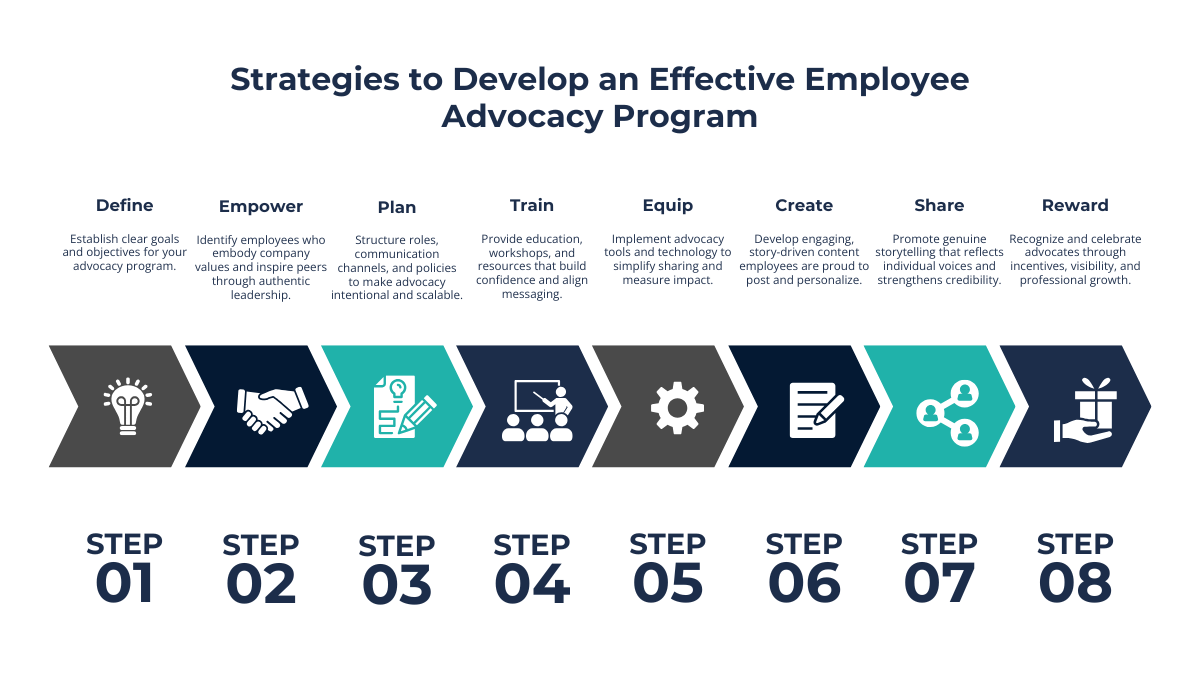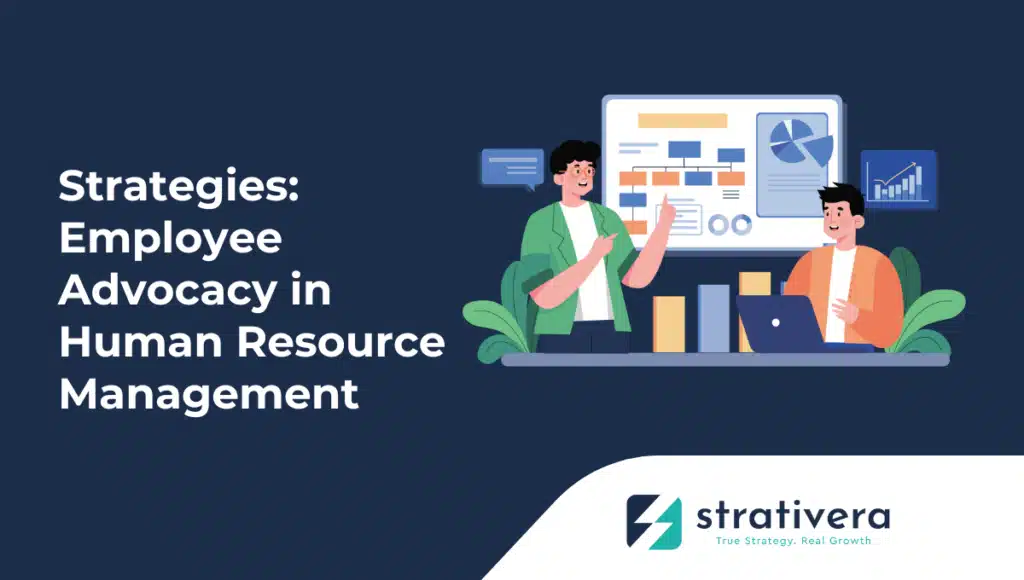Table of Contents
Employees are most often regarded as the most genuine voices of an organization. And as they champion their place of employment, their testimonies are more believable than carefully crafted corporate advertising. Such authentic voices increase trust, morale, and perceptions of people.
Studies consistently reveal the value of engaged employees. Specifically, Gallup determined that highly engaged teams produce 21% higher profits, which highlights how even advocacy is tied to engagement. This fact renders employee advocacy a crucial strategic weapon for HR leaders.
In managerial responses to changing labor issues, the emphasis should be put on integrating advocacy as a permanent HR program. The following sections discuss how to nurture authentic voices and leverage employee advocacy in human resource management.
What is Employee Advocacy?
Employee advocacy is best described as a voluntary act by employees to promote an organization. Advocacy occurs when jobholders share genuine stories about the workplace culture, successes, or values, whether they are shallow or deep.
Hootsuite reports that messages shared by employees are clicked eight more times than content published by formal brand accounts. This data confirms that advocacy is measurably effective regarding brand visibility and trust.
The integration of employee advocacy into their HR approaches enables companies to enhance their external reputation policy and improve their internal spirit of pride and belonging. Advocacy is transformed into a communication campaign and a cultural pillar.
Understanding Employee Advocacy in Human Resource Management
Employee advocacy in human resource management, at its best, enables workers to be able to encapsulate their positive experiences with their employer in a completely authentic manner. This can incorporate a professional observation of the week, employment opportunities, or company missions.
The Edelman Trust Barometer reported that the voice of employees is three times more credible than messages delivered by the CEO. The transformational impact of employee advocacy in HR is proven by that credibility.
An expertly structured employee advocacy in human resource management relates to employee advocacy and engagement, enhances retention, and makes employees feel important. This coordination produces both sustainable benefits to employee advocacy and engagement.
Examples of Advocacy That Work in the Workplace
Employees actively contribute to the success of organizations when advocacy is an organic part of their experience. The various employee advocacy examples shared below illustrate the common themes that recur with successful results.
- Social Sharing of Workplace Culture: When employees share stories about workday activities through LinkedIn or Instagram, they gain the attention of the outside world. A picture of a group event or a post about some learning experiences translates into authenticity. An employee advocacy plan can be well structured and allow the benefits of such sharing.
- Thought Leadership Initiatives: Employees are thought leaders who could publish their ideas, speak at a panel discussion, or even contribute to industry discussions. This raises the professional reputation of the individual and of the employer. These are some examples of advocacy that can place employees in a position of credible experts and reinforce organizational visibility.
- Employee Referral Programs: Referrals remain one of the most effective recruitment strategies. Workers who recommend jobs to their connections can improve hiring quality and demonstrate loyalty. The practice also ties into the general utility of the benefits of employee advocacy in helping to attract talent.
- Peer-to-Peer Recognition: Advocacy does not always need to be external. The internal platforms that employees use to recognize each other’s accomplishments also nurture morale and culture. These internal advocacy moments translate to a more robust employee advocacy and activation.
- Volunteering and Community Participation: Staff members who participate in the community program or engage in voluntary activities demonstrate the practice of organizational values. These campaigns align with the purpose-driven employee advocacy and engagement aspect, which fosters a strong relationship with audiences seeking sincere connections.
These employee advocacy examples demonstrate that day-to-day actions can be used to earn trust and loyalty. The HR departments should advocate the importance of all kinds of transmissions to both internal and external parties with the help of a professional People and Culture Advisory Services.
Strategies to Develop an Effective Employee Advocacy Program

Organizations need a systematic method for developing a sustainable employee advocacy program. The steps below provide the best practices that HR leaders can follow.
Define Clear Goals and Objectives
Clarity is essential for advocacy success. Goals are used to understand whether there is focus on brand creation, employee recruitment, or employee loyalty. Advocacy is ineffective as long as it is not measured by having set goals.
LinkedIn states that 50% more qualified applications are labeled under advocacy-driven recruitment. The development of clear goals will align the objectives with the long-term benefits of employee advocacy within an organization.
Identify and Empower Employee Advocates
Employees who naturally embody organizational values make excellent advocates. The HR professionals are advised to motivate such individuals to lead by example and share their genuine experience.
Forbes emphasizes that authenticity strengthens advocacy impact. Empowering employees through examples of admirable advocacy inspires peers to replicate these efforts.
Create a Structured Employee Advocacy Plan
An effective employee advocacy plan assigns roles, outlets, and policies to the process of employee advocacy. This structure makes advocacy intentional rather than spontaneous.
Gartner cites that structured methods result in better rates of adoption by the employees. Organizations are providing direction that makes advocacy remain robust and sustainable.
Provide Training and Resources
Employees may hesitate without proper guidance. HR must invest in training, workshops, and materials that would make employees feel safe sharing.
SHRM has confirmed that training programs can significantly boost the participation rates in advocacy. Employee advocacy and engagement are also enhanced through training, where employees are made aware of the best practices that should be adopted to communicate effectively.
Incorporate the Right Advocacy Tools
Technology makes advocacy scalable. Employee advocacy tools streamline the process of content sharing and allow tracking performance.
Through Everyone Social, firms that utilize advocacy platforms experience significantly greater adoption. By deploying these employee advocacy tools, organizations make communication more effective and easier to execute, and boost visibility further.
Create Engaging Content
Compelling content encourages employees to participate. Blogs that report success or interesting stories, or pictures, are much better than formal messages.
According to HubSpot, interactive content has twice the conversions as posts do. Engaging content will also allow employees to share practical examples of advocacy in the context of their lives that are relevant to their audience.
Encourage Authentic Sharing
Authenticity builds trust. The employees must have the freedom to express themselves in their own words without being bound by any limitations. HR must encourage individuality within advocacy.
According to the findings of Deloitte, authentic voices increase the audience’s trust by over 60%. Promoting authentic storytelling will help organizations build employee advocacy naturally.
Recognize and Reward Participation
Recognition motivates employees to advocate more consistently. Some of the programs that HR may implement to highlight contributions include providing incentives and opportunities for career development.
Harvard Business Review confirms that one of the most powerful drivers of engagement is recognition. Rewards help illustrate how the benefits of employee advocacy reinforce commitment to the plan.
Monitor, Measure, and Optimize
Continuous measurement ensures programs remain effective. Monitoring participation, engagement, and recruitment outcomes enables HR to make course corrections where necessary.
According to Sprout Social, companies that track advocacy work increase ROI. Measurement will verify whether employee advocacy in human resource management is effective and rectify the areas of concern.
Strengthen Employee Advocacy with Strativera
Employee advocacy delivers lasting cultural and business benefits. By formulating explicit agendas, enabling the voices of the agents, and providing the appropriate support, the HR leaders can turn advocacy into a competitive asset.
Strativera offers its People and Culture Advisory Services to help organizations incorporate advocacy into the HR practice. Structured advocacy is the right investment in human resource management that promises sustainable growth through employee privileges.
FAQs: Employee Advocacy in Human Resource Management
What is Employee Advocacy in Human Resource Management?
It is the art of influencing workers to be positive, both to their employer in-house and to the business world out there.
How Can HR Departments Start an Employee Advocacy Program?
One can start this with the process of defining goals, the role of natural champions, training, and the provision of supportive digital tools.
What Are the Main Benefits of Employee Advocacy for Organizations?
The main advantages are an increase in brand credibility, staff recruitment channels, and employee engagement levels.
How Does Strativera Support Employee Advocacy in HR Strategy?
It offers consultancy and customized frameworks through its consultancy services to enable organizations to implement advocacy in HR.
Can Employee Advocacy Improve Employee Engagement and Retention?
Yes, it helps to ensure a stronger connection between employees and organizational values, which is better in terms of employee loyalty and retention.
How Do You Measure the Success of Employee Advocacy Programs?
Their metrics are engagement rates, referral hires, and the level of participation.

